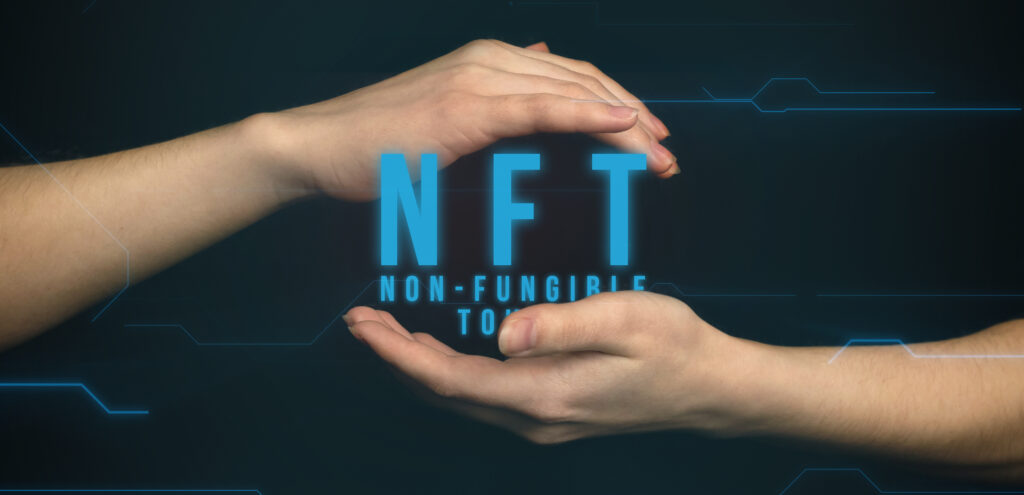NFT trading volumes have down by 19% by 2024highlighting the significant challenges facing the NFT market. Despite the initial buzz, many people, creators, and companies are still struggling to fully embrace NFTs. Why? Because a mix of regulatory questions, complicated user experiences, high costs and environmental concerns are causing even the most enthusiastic supporters to take a step back.
This article covers the biggest obstacles to NFT adoption and how you can overcome them. Whether you’re completely new to NFTs or already a member of the community, you’re sure to find something useful.
Understanding NFTs and their potential
NFTs are digital assets (sometimes images, sometimes videos, sometimes items in a game) stored on a computer blockchain. Think of a blockchain as a giant digital ledger, similar to a spreadsheet that everyone can view, but no one can secretly tamper with. Because each token is unique (or “non-fungible”), you can prove your ownership of it in a transparent way. This ownership role has attracted artists, gamers and major brands, all looking for new ways to engage people online.
A brief history
NFTs became popular around 2017 with projects like CryptoPunks, which offered small pixelated characters. Soon after, digital art marketplaces emerged such as Open Sea started popping up and NFTs made headlines as virtual works of art sold for millions of dollars.
Why NFTs matter
- Digital collectibles: Many NFTs are collectibles that allow fans to “own” a unique piece of digital content.
- Tokenization: In addition to art, NFTs can represent ownership of real-world objects, such as a fraction of a painting or even property.
- Integration with decentralized finance (DeFi): NFTs can be used as collateral for loans, earn staking rewards, or unlock specialized financial products in the crypto adoption ecosystem.

Key challenges in NFT adoption
1. Regulatory uncertainty
Different countries have different approaches to crypto, so it’s confusing for companies and individuals looking to launch or trade NFTs. Some governments treat NFTs as securities, others have no official regulations in place at all. This lack of clarity poses a compliance risk for artists, platforms and collectors in the NFT space.
Simple explanation:
Regulation is like the rules of the road for the crypto world, but they are not the same everywhere. People worry about accidentally breaking laws because they don’t know what is or isn’t allowed.
2. Scalability and high transaction costs
For NFTs, most activity is still happening on the Ethereum blockchain. When many people use Ethereum at the same time, the network becomes overloaded, causing gas rates (transaction fees) to skyrocket. High costs deter newcomers who just want to experiment.
Simple explanation:
Imagine you buy a cup of coffee for $5, but you have to pay a $20 service charge. This is what NFT fees can feel like on busy blockchains.
3. Environmental problems
Many NFT critics point this out Proof-of-Work Blockchains– where computers race to solve puzzles and add new transactions – consume large amounts of electricity. This process has raised questions about sustainability and the general ecological footprint of digital assets.
Simple explanation:
Think of a city where all the lights are on 24/7, even when no one is home. That’s the image some people have of older blockchain systems, which can be very energy intensive.
4. Complex user experience
Set up, manage a crypto wallet private keys (long passwords that prove you own your crypto), and figuring out how to bid or list an NFT on a marketplace can be confusing. For those unfamiliar with blockchain technology, there is a steep learning curve.
Simple explanation:
It’s kind of like logging into your email, except you have to do it with secret codes that you can’t lose, otherwise you’ll lose access forever – and no one can reset them for you.
5. Market volatility and speculation
One day a digital collectible could be worth $100 and a week later it could be worth $10,000, or $10. These wild swings scare off people who want stable investments. And there is always the news of “NFT BubblesWhere speculation overshadows actual use, creating a cycle of boom and bust.
Simple explanation:
Prices can rise and fall quickly. It’s like a roller coaster without seat belts, which can be very scary for first timers.
6. Limited interoperability
Currently, it is difficult to move NFTs from one blockchain to another. Different blockchains are like separate islands; it is difficult to exchange and use NFTs on multiple platforms. Lack of standardization means that you are often stuck with one network or marketplace.
Simple explanation:
Think of it like a smartphone that can’t send messages to users on other phone networks. Everyone becomes isolated.

How to Overcome NFT Adoption Challenges
1. Clearer regulatory frameworks
- Collaboration between government and business: Policymakers should work with blockchain developers and crypto adopters to create fair rules.
- Best practices: Platforms can provide creators with guidance on taxes, royalties, and intellectual property so they can comply with local laws.
- that will make more people copy.
Simple explanation:
When regulators and companies communicate, they can write clear rules. This way everyone can play by the same rules, with fewer surprises.
2. Scalability solutions and lower costs
- Layer 2 solutions: Technologies like Polygon and Arbitrum process transactions “off-chain,” easing congestion on Ethereum and lowering costs.
- Alternative blockchains: Newer networks like Solana or Tezos use different designs that handle more transactions at a fraction of the cost of Ethereum.
Simple explanation:
Imagine building a faster side road so traffic doesn’t back up on the highway. Layer 2 solutions help solve the glitch, making it cheaper to use NFTs.
3. Environmentally Friendly Blockchain Innovations
- Proof of Stake (PoS): Newer or updated blockchains validate transactions based on the number of coins people own, reducing electricity consumption.
- Carbon offsets: NFT creators and platforms can fund environmental projects, such as planting trees, to balance emissions.
Simple explanation:
PoS Blockchains work like a less energy-hungry machine. And if they still use some energy, financing green projects can help pay Mother Nature back.
4. User-centric platforms and education
- Simplified onboarding: Wallets and marketplaces should include clear, easy-to-use instructions, such as a video game tutorial.
- Community Resources: Publishers can create articles, step-by-step videos, and Q&A forums to teach beginners the basics.
Simple explanation:
When you buy something online, you expect a smooth process. NFT sites that copy this simplicity will attract more people.
5. Promoting long-term value over speculation
- Use cases beyond art: NFTs can represent real-world items such as concert tickets or club memberships, making them more than just digital collectibles.
- Act responsibly: Projects should focus on real benefits (such as exclusive content or real utility) rather than chasing hype.
Simple explanation:
Instead of chasing a quick buck, NFTs should solve real problems or provide lasting benefits so people stay interested even in the absence of viral buzz.
6. Promote interoperability through standards
- Cross chain bridges: This allows you to transfer NFTs between different blockchains, for greater access.
- Collaboration initiatives: Groups of developers can agree on technical standards (such as ERC-721 or ERC-1155) so that NFTs work everywhere.
Simple explanation:
By building bridges between islands, everyone can travel freely, trade and talk more freely. The same goes for NFTs between different blockchains.
Case studies and success stories
- NBA top shot: This popular platform overcame early technical issues by creating a more user-friendly purchasing process. Fans could purchase digital basketball highlights almost as easily as shopping on a traditional website.
- Tezos-based art platforms: Several artists have moved to Tezos to avoid high Ethereum fees and emphasize the chain’s environmental friendliness, proving that cheaper, greener networks can succeed.
These examples show that adapting to user needs – whether it means lower costs, simpler interfaces or focusing on specific communities – can lead to real growth, even when the market is slumping.
Future perspective on NFT adoption
Despite a 19% decline in NFT trading volumes by 2024, innovation has not slowed down. New features, smarter contracts (programs that run automatically when certain conditions are met), and deeper DeFi integration are all being tested. We’ll also likely see more major brands experimenting with digital collectibles, further increasing interest in the NFT ecosystem.
But there are still obstacles. Government policies can change quickly and market fluctuations can deter new users. But NFTs with real utility, such as in gaming, event ticketing and loyalty programs, will still attract new people.
Key Takeaways
The NFTs may be down in 2024, but they’re not done yet. The problems (regulatory uncertainty and environmental impact) are significant, but can be solved with collaboration, technology and user experience. The regulations will become clearer over time as governments and industry leaders continue to communicate.
- Scalability will improve with advanced solutions such as Layer 2 protocols, making costs more affordable.
- Environmentally friendly blockchains and carbon offset projects can address sustainability issues.
- User education is essential for ushering in a new wave of collectors and makers.
- Long-term value Overhype can keep NFTs relevant even during economic slowdowns.
- Interoperability will allow NFTs to function across multiple networks, increasing their usefulness.
By focusing on practical use cases and real innovation, the NFT space will likely overcome its growing pains. For anyone considering NFTs – whether a curious beginner, a dedicated creator or a seasoned investor – there has never been a better time to learn, adapt and shape the future of digital assets.
Editor’s note: This article was written with the help of AI. Edited and fact-checked by Owen Skelton.


